No products in the cart.
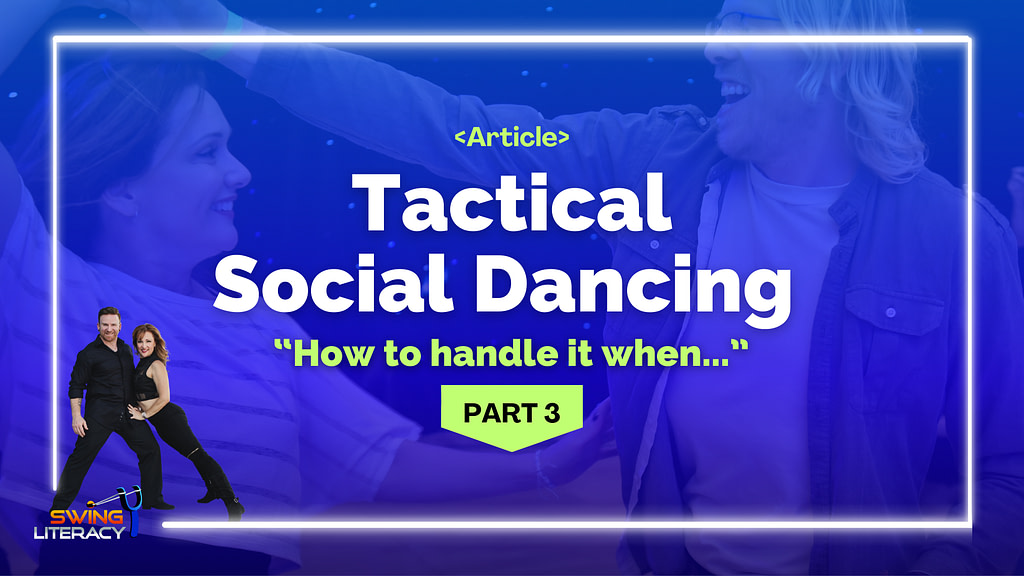
Tactical Social Dancing Part 3
Reading Time: minutes remaining
Part 1 and Part 2 of this series have garnered a massive response – when I opened up the floor to take suggestions for more tactical questions, people really unloaded!
Well, I’m honoured, because that’s exactly what we're here for. Not just this article series, but ALL the Swing Literacy programs: to fill a need and educate more dancers on topics they may be lost on.
There's so much more where this came from!
Enter your email to get loads more free tips and resources like this!
Part 3 of this series focuses more on the "social" aspect of social dancing...
Tactics for asking high-demand dancers
There’s a whole article on How/when to Ask Pros to Dance. But here are a few tips:
First, don’t form a line. See last week’s article, Part 1. Every dancer has their personal limit of how many dances they can do in a row. Don’t assume that a partner can handle “just one more”, if they are panting and dripping with sweat. If they are sprinting off the floor, do not do the desperate shoulder grab – this is inconsiderate and almost guaranteed to elicit a “no”.
Give them space – maybe approach them towards the end of the song with something like, “I don’t mean to rush your break, but when you’re ready, would you like to dance?” It’s a good idea to get on their radar before entering the dance space – “Save me a dance later?” can be suggested at the bar, in the elevator, at the entrance, or during class.
Regardless of your level, don’t be afraid to ask – there is no minimum level requirement to dance with anybody. At a social dance, skill has nothing to do with value. You are just as worthy as the dancers more skilled than you.
Tactics for handling a follower who is a “player”
No, not “playa”, I mean a follower who likes to play – they interpret the music and accepts all invitation leads you throw at them. I can relate to this follower!
The thing to remember is that playing is not the same as hijacking. Hijacking is stealing or interrupting the lead: when uninvited play disrupts the leaders’ flow.
But not all playing is hijacking. Followers are free to play with syncopations and body isolations to their heart’s content as long as it doesn’t disrupt the lead. As long as they go where the leader leads and when, they get to be the one to decide how they move there (techniques needed). There is a whole chapter I can dedicate to this topic, in fact, that’s what this article is all about:
Followers’ styling video series, Got Play? Followers’ Liberation for WCS
But for now, leader, what you need to know is that your follower might be playing on you because you are unwittingly giving invitations to do so. Your dance should be neither 100% assertive leading nor 100% “initiation” leading – it should be a healthy, balanced conversation (technique needed). It’s possible your “initiation leads” are being interpreted as invitations to play, or that your follower is fed up with being lectured at.
If you have an agenda with a certain pattern and you want to dictate how it finishes, make sure you are leading more assertively, but balance those patterns out with a healthy dose of open-ended patterns where the followers gets to choose, so you can have a balanced conversation.
Tactics for gracefully declining during a dance
I don’t mean decline an invitation to dance, I mean decline to do something within the dance.
Not everyone is comfortable with ducks, dips, drops, slides, squats, body rolls, invitation leads, pirouettes, etc. Followers, it will be useful for you to learn to recognize the setups/preps for the moves you prefer to avoid.
- You could increase your grip on your leader, slow your core travel, keep your feet under you, or even brace yourself from being lowered (technique needed).
- You can always turn a pirouette into a chaine turn and triple out of it (technique needed) – you aren’t required to spin on one foot.
- An invitation lead is not a demand or requirement.
- You can step out of a slide, squat under a duck, and lift the leader’s arm if you don’t want to limbo under it.
Whatever you do, finish with a big smile and musical styling, so they don’t mistake your declination of the move as rejection of them. You might follow up with, “I’m not up for those tonight”, or “I wasn’t quite ready for that”, or even more blunt, “That didn’t feel right, so I bailed for safety”. These are all “I” messages that will hopefully make the leader think twice about how (he) leads them.
Tactics for handling a “no”
Handling rejection is part of standard adulting. Hopefully the “no’s” you get are graceful and compassionate, but I know there are still some people who are manners-deficient.
Regardless of how well they manage their delivery, the meaning of their “no” is not always malicious. They usually are saying no because they mean “not right now”, because they need a break, just declined someone else, or don’t like the song. I will often say no if the song is inappropriate for the person asking me (ie. too fast for a beginner). 99% of the time, you should not take “no” personally.
Also remember that everyone has the right to decline a dance without judgement. There is a slight possibility they have a reason for declining a dance with you – if you notice they decline you habitually, take a moment and self-reflect. Maybe your last dance with them was not so pleasant? Did you get carried away with dips or hijacks? Check your hygiene habits. Get feedback on your partnering skills in a private lesson or peer practice session. Making some changes might gain you more Yes’s from all partners, not just this one.

Don't assume this is what a "no" means
Be sure to accept “no” gracefully, brush it off and don’t let it affect the rest of your night. “Ok, catch me later then?” is a gentle, open-ended proposal that invites the person to return the invitation when they are ready. Don’t pursue the person during the party – let them approach you, or wait to ask at the next party.
Tactics for handling uncomfortable behaviour
This is a topic that deserves its own article, but briefly… You need to decide on your own personal boundaries, both physical and social. While there are commonly held social norms, don’t assume that everyone’s boundaries are the same.
For example, I personally am not bothered when leaders look down, because I know they are usually concentrating or intimidated. But some women feel offended because they feel that the leader is staring at her chest.
If you are concerned about a particular behaviour that you are not sure is acceptable in the dance, ask your teacher. If your partner does something once that might be interpreted as inappropriate, assess the situation first before reacting: Was it an accident? Were they even aware that it happened? If it wasn’t intentional, you might not even need to bring it up.
If something your partner is doing repeatedly or intentionally makes you feel uncomfortable, you do need to take responsibility for speaking up. Not only for your own comfort, but for the comfort of their future partners.

Here's how it might sound: “Could you please aim your hand a little higher? (show it) Here's what would make me more comfortable” Speaking up does not have to be angry or accusatory. Stick to the facts, state how you feel, and make a request. If they react poorly, don’t take it personally – at least you tried.
If the situation escalates or the behaviour continues despite your request, time to report it to the host, who should be able to deal with the person directly.
I want to reiterate:
the person deserves the benefit of the doubt first, then a chance to learn and make it right. If it doesn’t get better, it is your responsibility to speak up, for the sake of yourself and the community. Be part of the solution.
Tactics for when your partner tries to teach you on the floor
Ah, the most common social dance crime! Under the guise of “trying to be helpful”, some partners allow their need to control the situation outweigh their empathy and social agreements.
I have often fantasized that a referee could step in and issue yellow cards and red cards like they do in soccer. But in the absence of that system, dancers need to stand up for themselves. I elaborate on this topic in the article, Pep Talk for the Girls, Part 2.
Now, keep in mind, that “teaching” about a safety request is completely acceptable and encouraged. For example, if I leader is reaching for your hip and keeps “missing”, you need to speak up and show him where he needs to put his hand. If a follower keeps squeezing her elbow down on your forearm in closed position, the leader needs to reposition it with an explanation of how it is hurting him.
But for all those circumstances that don’t involve safety and therefore unsolicited feedback is inappropriate, what should you say? Here’s a list to choose from, depending on the circumstances.
Note that none of these phrases offer an apology. Do not apologize!
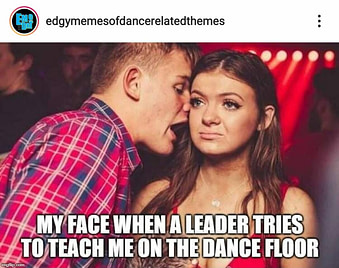
Tactics for when the leader accuses you
Somewhere along the line, some (almost exclusively male) leaders never got the memo that their role is only to orchestrate and cause movement.
Because they were in a class where the followers were taught their footwork and movement solo first, they learned that followers were supposed to memorize their part of the pattern and execute it on a cue. This implied lesson may not be their fault, but it is counterproductive to social dancing. The result is that some male leaders sometimes blame their follower when their move goes awry.
First of all, blame is unwelcome in social dancing, just as it is in social conversation. But if he happens to accuse you, check yourself first: were you listening? Were you managing your connection correctly? Did you wait to be lead? Did you follow your inertia? If not, take the feedback (as rude as it was) and make adjustments.
If the answer to these questions is yes and his blame is unwarranted, speak up and never apologize: “Oh, I didn’t feel the lead on that one”, “I just tried to follow your lead”, “That felt like that’s what you wanted”, “I will happily as soon as you lead it”. Be sure to deliver with a genuine smile, or at least with a neutral, non-judgemental tone and facial expression.

Tactics for increasing your chances of a second dance
Second dances aren’t necessarily back-to-back. It’s not common in WCS for a partner to ask you to stay with them for a second song, but sometimes if you are really connecting it’s nice.
But I’m talking about getting a second dance later in the evening. Being a good sport, big smiles, positive vibes, encouraging reactions, all leave your partner with a good feeling that will make them want to come back for more.
Sometime it might feel like you bombed the dance and want a “do-over”. If the song you danced to was lame or unknown, you might suggest trying again later to a more familiar song. You could also laugh it off by saying, “thanks for helping me shake out my cobwebs, can we try again later?” You could throw out a general warm fuzzy invitation: “I always love our dances – come and find me for a dance anytime”.
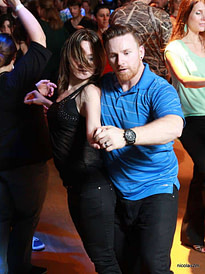
Remember that many dancers like to “work the room”, trying to dance with as many people as possible once, before “going back for seconds”. This doesn’t mean they are not interested in dancing with you again – they just have a method.
Whatever you do, don’t be a stalker. If I just danced with you 2 songs ago, I am guaranteed not going to ask you for another dance just because you are standing nearby. I’m going to find a “fresh” partner, and when I’ve danced with all of them, only then will you appear “fresh” again to me.
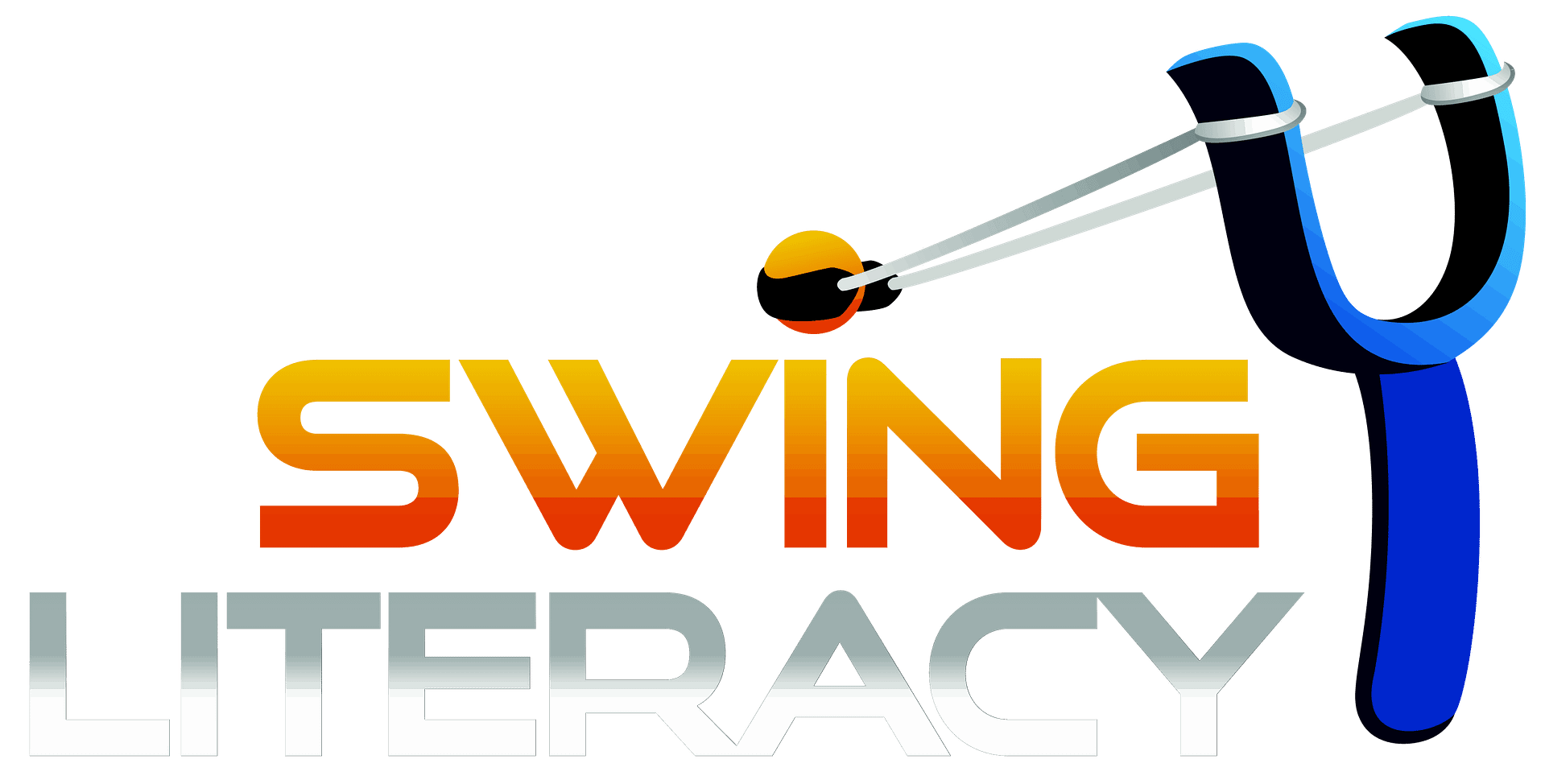

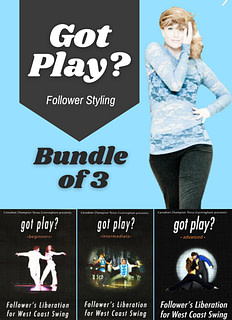
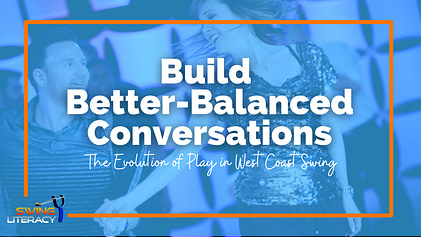

 Part 1
Part 1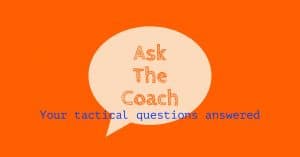
1) How can I make space for or invite a follow to be creative? I am thinking about when leading much stronger follows.
2) What should I do when directed or "assigned" a dance partner by another dancer or teacher while social dancing?
– "I need/want you to dance with xyz person because…"
– "Here, dance with my friend"
– "Come back over here after xyz because I want to dance with you"
At one of our local dances, we have a small group of young ladies (twenty somethings) who seem to be disinclined to dance with me. This is based on the vibe I get from them (eye contact, etc.) , and the fact that they have said "no" a couple of times. So I have not been asking them lately. They have all danced with me at least once so they know how I dance. For context, I have been breathing for 63 years and social dancing (mostly leading) for 14 years and teaching for about 10 years. I am fine with them not dancing with me but I want to make sure that they don't think that I don't want to dance with them. Advice?
I would make an effort to ask them a few times a year. Give yourself credit for the improvement you have made in your dance, and approach them with the mindset that you want to update their impression of you.
Another thing you could do is find a moment to flat out ask them what you could do to be a better partner for them. They’ll be impressed that you asked, which shows that you care about their experience, but also you could get practical, direct info on exactly what they want in order to stop avoiding you.
Don’t forget the option of asking their teacher for coaching on how to be a better partner and insight on what you think these followers might be concerned or complaining about. This is less direct, but more likely to be instructive.